Delphinium: [Cultivation, Associations, Pests and Diseases]
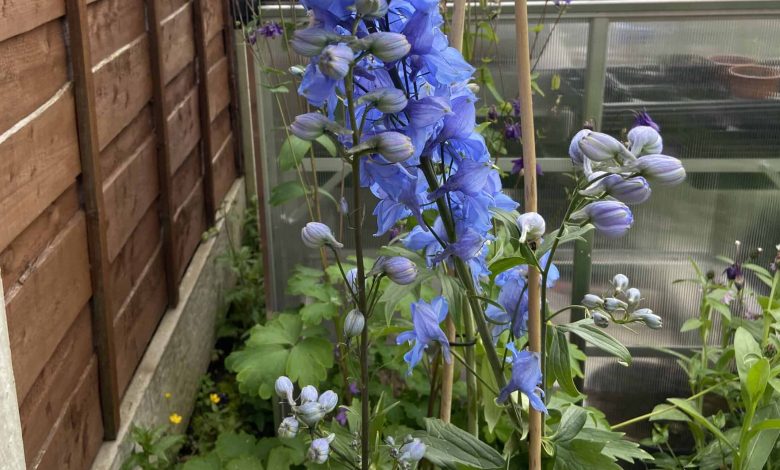
Important points when planting Delphinium
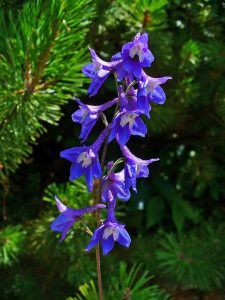 Where to sow? In full light. It needs sunlight and/or partial shade.
Where to sow? In full light. It needs sunlight and/or partial shade.- When? In spring or autumn.
- How do we prepare the land? Removed, deep, removing weeds. With substrate such as well decomposed compost.
- How do we water? With drip.
- How often do we water? In summer, deep watering every week. When temperatures drop, stop watering.
- Plagues and diseases? Mealybugs, aphids, gray worms, moths. Bacteriosis, white neck rot, bacterial wilt.
The delphinium also known as the «larkspur» is a plant native to Europe and Asia. It was discovered in 1753 by the botanist Carlos Linneo.
The most interesting thing about the delphinium is its flowers that appear in spikes and have a spur on the back; they can be blue, pink, red, purple, and even yellow.
When to plant a Delphinium?
The sowing of the delphinium can be done by means of seeds sown at the end of winter in a warm bed or by cuttings in spring.
Taking into account that planting by seed is a simple procedure, it is recommended to buy them at plant stores or garden centers. Delphiniums bloom in June. With the timely removal of faded inflorescences at the end of summer, flowering is repeated.
With seed propagation, flowering occurs in the year of sowing at the end of summer. The annual sowing of seeds allows to have delphinium in bloom almost all summer.
Where to do it?
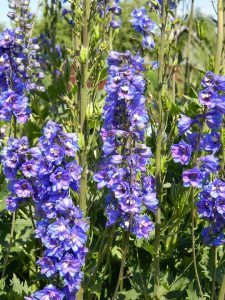 To grow the delphinium, a sunny place that is well protected from the wind is required., flowerbeds, curbs and mixed margins. It is even used as a cut flower.
To grow the delphinium, a sunny place that is well protected from the wind is required., flowerbeds, curbs and mixed margins. It is even used as a cut flower.
The delphinium is a temperate-cold climate plant (ideal for English gardens) that needs high humidity and not excessive heat, as well as exposure to full sun (in mountain areas) or semi-shade (if the heat is more intense).
They are not easy to grow plants and it is not recommended to grow them in very hot and dry climates, as well as in cities because they do not like pollution. It is convenient to have them in mountain places or next to lakes and forests.
Delphiniums enjoy space, so avoid overcrowding them. It may be best to keep children away from these plants once they bloom. They are toxic if eaten and are especially dangerous to livestock.
How to prepare the land?
Delphinium is demanding in terms of soil quality; it must be very deep, drained and very fertile to support the opulent flower.
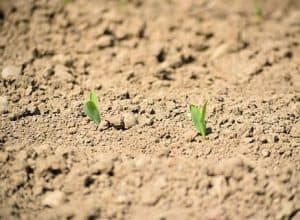 The type of soil that the delphinium needs should be acidic with a ¼ peat or leaf mulch. It does not like flooded soils during its dormant period.
The type of soil that the delphinium needs should be acidic with a ¼ peat or leaf mulch. It does not like flooded soils during its dormant period.
It is essential that the substrate has efficient water drainage and good ventilation. It is recommended to avoid cultivation in clay substrates that retain a lot of moisture and easily become waterlogged.
It is necessary to remove weeds and add potting compost and well-rotted compost. On heavy ground, it is recommended to drain the soil with coarse sand. Soak the cups in a container of water for a quarter of an hour before installation.
If the sowing of the delphinium is done directly, a soil rich in nutrients must be sought. If soil quality is poor or heavy, it can be improved by adding rotted manure or compost.
How do we water a Delphinium?
The delphinium requires frequent watering to prevent the substrate from drying out completely.
It is preferable to apply deep watering every week so that the entire root system obtains enough water. If temperatures are very low, watering should be stopped completely.
How do we plant a Delphinium step by step?
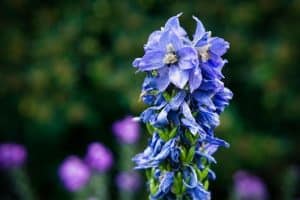 The multiplication of the delphinium is by cuttings or seeds. To sow by seed, it is necessary to carry out a cold treatment in domestic refrigeration at 5°C for about 20 days.
The multiplication of the delphinium is by cuttings or seeds. To sow by seed, it is necessary to carry out a cold treatment in domestic refrigeration at 5°C for about 20 days.
You can also soak the seed for 24 hours to improve germination. Planting through seeds or cuttings is very simple:
- Choose the seed or cutting and sow thoroughly into existing soil or pot. If the soil is strongly acid, a little lime can be added.
- If sowing seeds, it is recommended to start the process in early spring, March or April and requires fine gravel or sand in the soil. If cuttings are used, they can be taken in June or July.
- Place the plant in a place with abundant sunlight and take care of it from the winds.
- Water evenly and keep the surface moist without flooding.
- To speed up the growth process, it is recommended to place them in a greenhouse for one to two weeks. This also reduces the need for pesticides and will help protect them from insects.
- The seedlings should soon start to show. When they are large enough to handle, they should be transferred to individual pots.
- If started indoors, it is best to expose the seedlings to the outside elements gradually.
Placing them in a cold frame greenhouse is the most recommended method, but keeping them indoors with short periods of time in the garden is also fine.
Then it is simply recommended to increase the number of days the seedlings are exposed to outside air until they are ready to plant.
What favorable associations does it have?
The association of crops of compatible plants produces benefits with respect to their cultivation separately, in addition to the use of light, water and/or nutrients.
The delphinium, being a plant with very beautiful spike-like flowers, could be planted with other floral species to achieve beautiful compositions for gardens and interiors.
What pests and diseases attack the Delphinium?
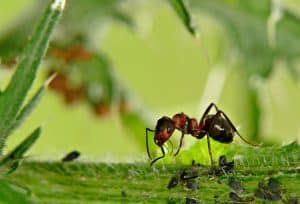 Delphinium is susceptible to attack by various pests. Mealybugs and aphids frequently affect the inflorescences causing premature wilting of the flowers.
Delphinium is susceptible to attack by various pests. Mealybugs and aphids frequently affect the inflorescences causing premature wilting of the flowers.
Other pests such as the gray worm, the moth, aphids, leafminers, fly larvae, also affect the plant.
Likewise, although not very frequently, some molluscs appear (snails and slugs) that feed on the leaves and mainly on the root system.
During periods of drought, the plant can also be attacked by mites (red spider) that invade the underside of the leaves and by various pathogenic fungi during the seasons where there is higher humidity.
Diseases that can harm delphinium include: bacteriosis, white neck rot, bacterial wilt, Pseudomonas delphinium bacteria, and excess moisture.
It is recommended to have various home remedies or specific pesticides on hand to control pests as soon as they are detected.
Bibliography and references
- Kreuter, Marie-Luise. (2005). Biological garden and orchard. Mundi-Press Books. Madrid Spain.
- Leyhe, Ulrike. (2006). Flower beds. European Hispanic Publisher. Barcelona, Spain.
- Mateo Sanz, Gonzalo. (2013). The plants of the Eastern Iberian System and their environment: Illustrated guide for their identification. Jolube Botanical Consultant and Editor. Jaca-Spain.
- Walsh Meza, Erika del Carmen. (2009). Productivity study of Delphinium cultivation, Sea Waltz variety, with the application of beneficial microorganisms (Trichoderma harzianum, Gliocladium spp, Bacillus subtilis, Azospirillum spp. and Azotobacter spp.) under field conditions, Cusubamba-2008. National polytechnic school. Quito, Ecuador. Reproduced from: https://bibdigital.epn.edu.ec/bitstream/15000/1658/1/CD-2687.pdf
- Yumbla Orbes, Maria Rosa; Collaguazo Lita, Nelly Melissa. (2019). Determination of the effect of climatic elements on the growth, development and production of Solidago canadensis and Delphinium elatum. Pichincha. Central University of Ecuador. Quito, Ecuador. Reproduced from: http://200.12.169.19/bitstream/25000/20181/1/T-UCE-0004-CAG-172.PDF

![Photo of How to Fertilize Naranjo: [Components, Needs and Importance]](https://www.complete-gardening.com/wp-content/uploads/2022/08/how-to-fertilize-naranjo-components-needs-and-importance-390x220.png)
![Photo of How to Plant Vines and Get Top Quality Grapes (or Wine): [Complete Guide]](https://www.complete-gardening.com/wp-content/uploads/2022/08/how-to-plant-vines-and-get-top-quality-grapes-or-wine-complete-guide-390x220.jpg)
![Photo of Sowing Broccoli: [Care, Cultivation, Irrigation, Substrate and Pests]](https://www.complete-gardening.com/wp-content/uploads/2022/08/sowing-broccoli-care-cultivation-irrigation-substrate-and-pests-390x220.jpg)
